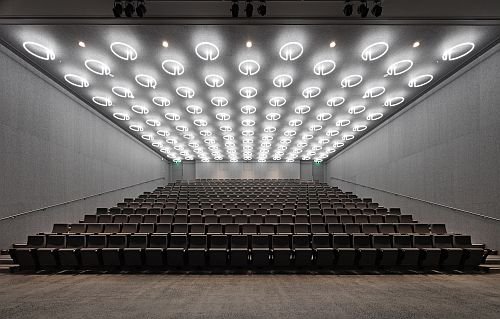28 June 2013
The National Centre for Synchrotron Science (NCSS) building designed by Bates Smart and constructed by Kane Constructions at the Australian Synchrotron site has won the 2013 Victorian Commercial Architecture Award.
The NCSS also received a commendation for interior architecture.
 The 2013 Victorian Architecture Awards from the Australian Institute of Architects were presented on 21 June, recognising 44 projects from 240 entries. All projects receiving a named award or an architecture award progress to the 2013 National Architecture Awards to be announced in November.
The 2013 Victorian Architecture Awards from the Australian Institute of Architects were presented on 21 June, recognising 44 projects from 240 entries. All projects receiving a named award or an architecture award progress to the 2013 National Architecture Awards to be announced in November.
Construction of the NCSS started in early 2011, and the NCSS began operating in May 2012. Its construction was funded through an initiative of the Australian Government, the Education Investment Fund, which awarded the Australian Synchrotron $36.78 million for the design and construction of five new buildings, of which the $20 million NCSS was the largest.
Under the management of Dr George Borg (AS), a project team prepared concept designs and cost plans, selected the architects and builders, and took on the day-to-day management and review of the project. The project was delivered ahead of schedule and under budget. The NCSS was awarded a 5 Star design rating from the Green Building Council of Australia for excellence in environmentally sustainable design, one of only 12 buildings in Victoria to have achieved such a rating at that time.
George Borg believes that the EIF-funded facilities will make an important contribution to the careers of thousands of researchers using the Australian Synchrotron now and for many years into the future. People who contributed to the success of the EIF projects included Gavin Edwards, Alexis Kouts, Richard Feltscheer, Jonathan Priest, Enza Viera and Margaret Hilton (DIISRTE).
The architects’ vision for the NCSS is described in the building award profile on the Architecture AU website, written by Melbourne-based architect Mark Raggatt:
Bates Smart isn’t shy about its goal of manifesting in architecture the hopes of synchrotron science. “We wanted to match the revolutionary calibre of scientific research that’s being done at the Australian Synchrotron with a building that, through its materiality and poise, would make light and the work of the research manifest in the material fabric of the building,” says Kristen Whittle.

Photo above: The NCSS building. Image: Peter Bennetts
At left: NCSS auditorium. Image: Peter Bennetts
